Video of the Week:
Controlling Clover in Your Lawn
Turfgrass:
Thatch Control in Warm-Season Lawns
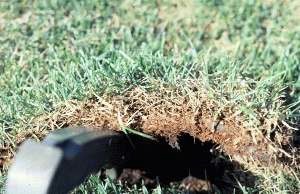
When thatch is less than one-half inch thick, there is little cause for concern; on the contrary, it may provide some protection to the crown (growing point) of the turfgrass. However, when thatch exceeds one-half inch in thickness, the lawn may start to deteriorate. Thatch is best kept in check by power-raking and/or core-aerating. If thatch is more than 3/4 inch thick, the lawn should be power-raked. Set the blades just deep enough to pull out the thatch. The lawn can be severely damaged by power-raking too deeply. In some cases, it may be easier to use a sod cutter to remove the existing sod and start over with seed, sprigs or plugs. If thatch is between one-half and a 3/4- inch, thick, core-aeration is a better choice.
The soil-moisture level is important to do a good job of core-aerating. It should be neither too wet nor too dry, and the soil should crumble fairly easily when worked between your fingers. Go over the lawn enough times so that the aeration holes are about 2 inches apart. Excessive thatch accumulation can be prevented by not overfertilizing with nitrogen. Frequent, light watering also encourages thatch. Water only when needed, and attempt to wet the entire root zone of the turf with each irrigation.
Finally, where thatch is excessive, control should be viewed as a long-term, integrated process (i.e., to include proper mowing, watering, and fertilizing) rather than a one-shot cure. One power-raking or core-aeration will seldom solve the problem. (Ward Upham)
Vegetables:
Mulching Tomatoes
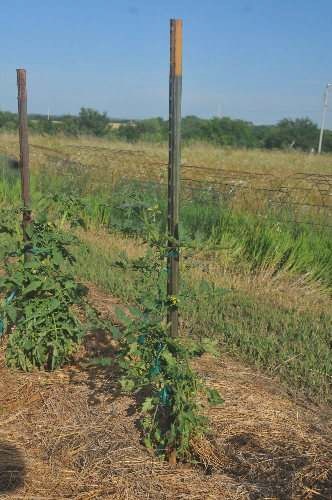
Hay and straw mulches are very popular for tomatoes but may contain weed or volunteer grain seeds. Grass clippings can also be used but should be applied as a relatively thin layer – only 2 to 3 inches thick. Clippings should also be dry as wet clipping can mold and become so hard that water can’t pass through. Also, do not use clippings from lawns that have been treated with a weed killer until some time has passed. With most types of weed killers, clippings from the fourth mowing after treatment may be used. If the lawn was treated with a product containing quinclorac (Drive), the clippings should not be used as mulch. If the weed killer used has a crabgrass killer, it likely contains quinclorac. (Ward Upham)
Fruit:
Reducing Fruit Numbers on Apple Trees
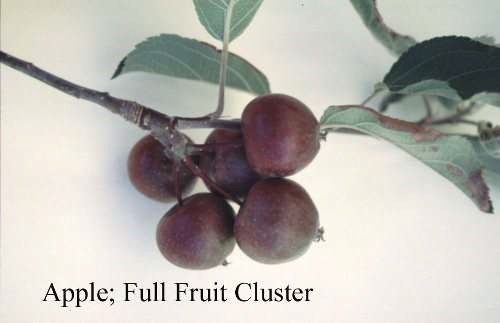
The second benefit of thinning is to promote larger fruit on this year's crop. Generally, an average spacing throughout a tree of about 4 inches per fruit is sufficient for a good return crop next year, as well as a desirable size on the fruits to be harvested this fall. (Ward Upham)
Flowers:
Iris Bacterial Soft Rot
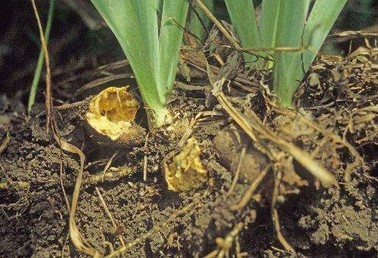
Rhizomes that show extensive signs of damage should be discarded. If there is a plant that has special value, you may wish to try to save it. The American Iris Society suggests using a spoon to remove all infected tissue. Then, allow the rhizome to dry in the sun. Finally, use a chlorine based cleanser to powder the wound. Dousing in place with Dial antibacterial soap (with triclosan) can be substituted for the chlorine based cleanser.
When dividing rhizomes from beds that have shown evidence of soft rot, disinfect the knife between cuts of even apparently healthy rhizomes with a 10% bleach solution or rubbing alcohol.
As mentioned previously, iris borer damage can provide a place of entry for this disease. To control iris borers, remove and discard dead leaves in the fall to eliminate a number of the iris borer eggs. Larvae can also be killed by hand in June by squeezing infested leaves in the vicinity of the injury. During division, borers in lightly infested rhizomes can be killed by poking them with a piece of wire. Borer control can also be achieved through the use of imidacloprid (Merit, Bayer All-In-One Rose & Flower Care, Bonide Systemic Granules, Hi-Yield Systemic Insect Granules) or through the use of the parasitic nematodes Steinernema carpocapsae or Heterorhabditis bacteriophora.
Imidacloprid should be used as a drench (directions on label) when the air temperature reaches 70 degrees two days in a row.
The parasitic nematodes must be applied when the soil temperature is above 50 degrees F. Use 1 quart water/nematode mix per square foot to allow the nematodes to swim to the pest.
Steinernema carpocapsae gave better control (100%) than Heterorhabditis bacteriophora (87%) in research conducted by the University of Maryland. (Ward Upham)
Pests:
Spirea Aphid: Watch Out for this "Sucking" Insect
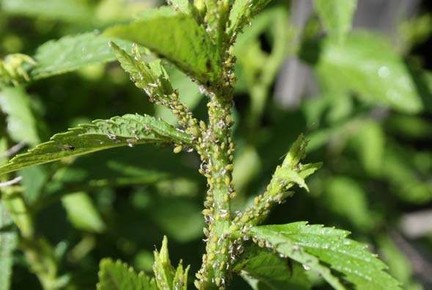
Although the aphids produce honeydew (sticky, clear liquid), continual rainfall will wash the honeydew off plants. In the summer, both winged and non-winged aphids may be present. The winged forms usually appear when conditions become crowded on infested plants, in which they migrate to a more suitable food source such as another spirea plant to start another colony.
Heavy rainfall and strong winds will dislodge spirea aphid populations from plants onto the ground, where they eventually die. Frequent applications (twice per week) of forceful water sprays will quickly remove spirea aphid populations without disturbing natural enemies such as parasitoids and predators. They have a number of natural enemies including ladybird beetles, green lacewings, and hover flies that may help to regulate spirea aphid populations. Spirea aphids are, in general, exposed to regular applications of pesticides such as insecticidal soaps (potassium salts of fatty acids) and/or horticultural oils (petroleum, mineral, or neem-based) that may be effective in suppressing populations of spirea aphid. These pesticides have contact activity only, so thorough coverage of all plant parts is important. Furthermore, these pesticides are generally less harmful to natural enemies compared to conventional pesticides. (Raymond Cloyd)
Miscellaneous:
Sidedressing Chart Available
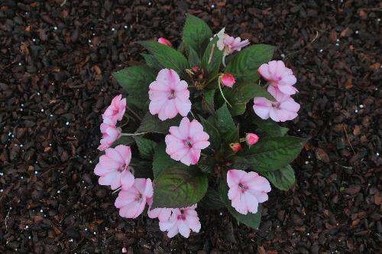
Squirrel Damage to Trees
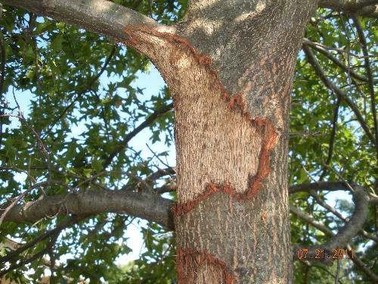
More serious damage is caused when squirrels strip the bark off of limbs or rarely, the trunk. Wounds can be quite large and the squirrel can effectively girdle the branch by removing all the bark completely around the circumference. Branches girdled in this way will die and the tree may be ruined if those branches are major.
Why squirrels do this is still a bit of a mystery. Some people think it is simply a means to sharpen their teeth or that they are seeking nesting material or water. Other people think that there are certain squirrels that are high-strung and cause this damage out of nervous energy. If the damage is limited to snipping the ends off of branches, it is probably best to ignore the activity as the tree suffers little harm. But if real damage is occurring due to extensive bark removal, try feeding and watering them. If that doesn’t work, control may be necessary. Fox and gray squirrels are game animals and can be hunted in season where it is legal and safe to do so. They can also be trapped and moved away from the area they are causing damage. For more information on control, see http://www.bookstore.ksre.ksu.edu/pubs/L863.pdf . (Ward Upham)
Flooding Damage
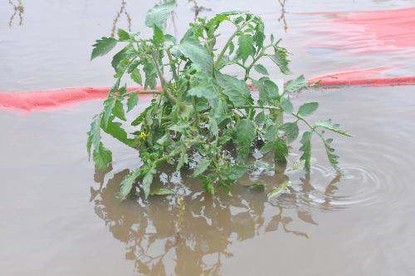
Usually, as long as water drains away within 24 hours, the impact on plant health is minimal. However, shallow, stagnant water under hot, sunny conditions can literally cook plants, reducing survival time to as little as a few hours.
Vegetables: What about safety regarding eating produce from a garden that has been flooded? Standing water should not cause a safety problem as long as the aboveground portions of the plant remain healthy. Do not use produce from plants that have yellowed. Also, using produce flooded with water contaminated with sewage (lagoon) or animal manure can also be dangerous.
The safest approach is to discard all garden crops that have been in contact with such water. Certainly, leafy vegetables should always be discarded. However, you may eat fruit from such crops as tomatoes, peppers, eggplants, sweet corn, squash, cucumbers, and similar vegetables that develops after the waters have subsided as long as the fruit is not cracked or soft. Always wash vegetables thoroughly before eating.
Lawns: Under the cool conditions of early spring, turfgrasses can often survive several days of flooding. However, during hot, sunny conditions with shallow, stagnant water, lawns may be damaged quickly, sometimes in a few hours. This situation often occurs when shallow depressions in a lawn allow water to pool. Note such areas and fill in with additional soil once the waters have subsided.
Trees: Trees differ markedly in their ability to withstand flooding. Some trees have mechanisms in place to provide oxygen to the roots of plants with water saturated soils and others do not. However, most trees will maintain health if flood waters recede in 7 days or less. It also helps if water is flowing rather than stagnant as flowing water contains more oxygen. If the roots of sensitive trees are flooded for long periods of time, damage will occur including leaf drop, iron chlorosis, leaf curl, branch dieback, and in some cases, tree death. Another danger of flooding is the deposition of sediment. An additional layer of silt 3 inches or more can also restrict oxygen to the roots. If possible, remove deep layers of sediment as soon as conditions permit. This is especially important for small or recently transplanted trees.
Try to avoid any additional stress to the trees this growing season. Ironically, one of the most important practices is to water trees if the weather turns dry. Flooding damages roots and therefore the root system is less efficient in making use of available soil water. Timely waterings are vital to a tree’s recovery. Also be diligent in removing any dead or dying branches which may serve as a point of entry for disease organisms or insect pests. The following information on tree survival came from the US forest Service.
Trees Tolerant of Flooding: Can survive one growing season under flooded conditions. Red maple, silver maple, pecan, hackberry, persimmon, white ash, green ash, sweetgum, sycamore, eastern cottonwood, pin oak and baldcypress.
Trees Moderately Tolerant of Flooding: Can survive 30 consecutive days under flooded conditions. River birch, downy hawthorn, honeylocust, swamp white oak, southern red oak, bur oak, willow oak and American elm.
Trees Sensitive to Flooding: Unable to survive more than a few days of flooding during the growing season. Redbud, flowering dogwood, black walnut, red mulberry, most pines, white oak, blackjack oak, red oak and black oak.
After the Flood: Soils often become compacted and crusted after a heavy rainfall. This also can restrict oxygen to the roots. Lightly scraping the soil to break this crust will help maintain a healthy root system and therefore, a healthy plant. Be careful not to cultivate too deeply as shallow roots may be damaged. If you think the excessively wet weather will continue, bedding up the rows before planting even just a couple of inches, will improve drainage and allow for better aeration. (Ward Upham)
Contributors: Raymond Cloyd, Extension Entomologist; Ward Upham, Extension Associate
 RSS Feed
RSS Feed
